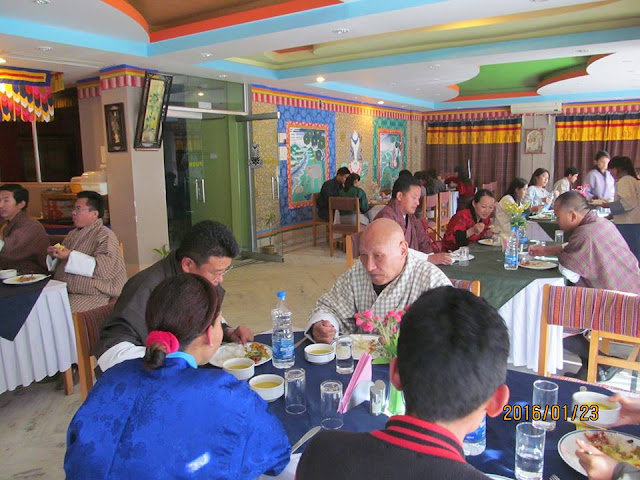In 2003, I took the manuscript of my collection of 30 short stories and went to the two places I knew might help me in publishing it. I first went to Kuensel and then to DSB. It cost me all my pocket money to print two manuscripts, and both the places didn’t even read them yet kept them. My idea of publishing was limited to them, and it stopped there. I now understand that even they were limited by so many factors. They were not the true kind of publishers we have heard of to expect anything. And I fear we still don’t have that kind of a publisher. Therefore, I shall tell you about self-publishing.
In 2018, during the Mountain Echoes Literature Festival, I told DSB how it broke my little heart when I didn’t get back my manuscript. He couldn’t believe that I came to him 16 years ago. He went back, dug into his storeroom and fished out the manuscript I submitted.
That book could not be published. It’s been my dearest dream to print that book, but somehow, I published another book. With the experience from publishing PaSsu Diary, my first book of selected posts from this blog, and several other books for friends, I have acquired the knowledge and confidence to publish books. I may finally publish my short stories any time this year.
In this post, I will use my experience to create a simple guide to self-publishing a book in Bhutan. I will do it as if I am explaining the process to my younger self back in 2003 to help everyone who is aspiring to publish a book.
WRITING & EDITING
Once you finished writing the book, start rewriting it. It’s said that good stories are not written; they are rewritten. You must hire a good editor to refine your book. Even professional writers have to get their works edited by their editors. Stephen King said, “To write is human, to edit is Devine”
It could cost you anywhere between Nu. 20,000 to Nu. 80,000 for a serious editor. But don’t worry, you could get your English teacher or someone who is strong in language to edit your work for free.
TITLE & COVER
This process is about branding your book. For your book to be discussed or bought, way before the story is read and reviews wrote, the book needs to carry a captivating title and cover.
You can start off with a working title for the book while writing but once you have completed the story, consider naming the book all over again. Note that for a Bhutanese book to stand out with its own identity, always try to add some Bhutanese elements in the name and even the cover.
Cover design (Jacket) with spine and Blurb
The book cover is the face of the book, and you must invest as much time in it as you did in writing the book. Seek help from artists, graphic designers and people who have experience in the field. Look for examples and show them to your designers to work out several drafts for you.
Remember, a book with poor cover design can hardly sell because people judge the book by its cover no matter what. Forgive them.
LAYOUT & DESIGN
Hire a graphic designer to design the layout of your book. This is when your book is transformed from MS Word format to PDF format on software like InDesign, in exact shape and size it will appear when printing.
You must let the designer know the size you desire for the book. If you are not familiar with the standard dimensions of the book, take a book of desirable size and ask the designers to design your books like that.
Technical page and sample layout work done.
Once you have your book layout done, you know the number of pages and the exact amount of paper it will require. These details are required for the printing company to decide the cost of printing your book.
Designing the layout of your book could cost you Nu. 10,000 to Nu. 20,000. Some printing company will do it pro bono since you are printing the book with them.
COST OF PRINTING
The cost of printing a book is determined by the following factors;
- Paper quality
- Number of pages (after the layout is done)
- Colour or B&W
- And the number of copies
To give you a rough idea, if you are printing a novel of 200 pages on a good quality paper, and you are printing 1000 copies of the novel, the printing house will quote approximately Nu.150 per copy, which means you need to pay Nu. 150,000 for printing the 1000 copies.
However, if you are going for 2000 copies, then the price per copy will drop from Nu.150 to somewhere around Nu. 110. So, you will be paying Nu. 220,000 for printing 2000 copies. That’s because the printing machines use a certain aluminium plate to transfer the image onto the papers, and when you increase the number of copies, the cost of the plates gets divided further. If you are not interested in the technical details, just note that the printing cost per book reduces if we increase the number of copies. It’s more economical to print in bigger bulk, but the risk is big too.
Once you know the cost of printing, then you can determine the price of your book. If you are paying Nu.150 per book, then let the price of your book be Nu.300, be gentle on the price since it’s your first book. One day when you are popular, then you could strike higher.
Always print the price of your book on the back cover to ensure that your readers get the book at the price you set and that bookstores don’t charge higher than you intended.
The book's cover page will either have a separate cost (Nu. 5 per piece) or come as a compliment with the book. This has to be agreed upon while negotiating.
ISBN & BICMA No.
ISBN Number is issued by the Centre for Bhutan Studies (CBS) in Bhutan. Go to their website and apply for an ISBN number for your book by furnishing the online form with your book details or (download an actual form and emailing it to Mr Tashi Tshering at ttcering@gmail.com/ttshering@bhutanstudies.org.bt.)
You will get it issued within a day or two. You don't have to pay for this service.
Also, you need to get the publishing approval from BICMA. Print a dummy copy of your book and submit it to BICMA along with the application form. You should get the approval certificate with the BICMA number within a week or so. A Nu.1500 fee is charged.
Certificate of Registration for Book Publication from BICMA
You have to put both the ISBN and BICMA number on the back-cover page along with MRP and on the book's technical page. Generate a bar code using the ISBN number and have it printed on the back cover.
Barcode and Price on the Back Cover
Once you have these details, you can wrap up the design and layout works and send the work to the printing house.
Note: You must compulsorily deposit three copies of your book to the National ISBN Agency, the Centre for Bhutan Studies and GNH Research, and additionally 2 copies to National Library.
PROOFREADING
But wait, one last thing before sending for mass printing, send it for proofreading. This is the last chance for you to remove any error from the book, so get the copy proofread by someone good at it, preferably a fresh pair of eyes. If any error is spotted, you have to ask your designer to make the necessary corrections.
Once all is done, you give the green flag to the printer, and they will take about a month to print your book and deliver it to you.
LAUNCH and PROMOTION
Once you receive the book from the printing press, organize a book launch ceremony. Invite people from media as guests. This is your opportunity to let the country know that you have published a book. Set up a bookstall somewhere and let the guests buy the book, but let someone else sell the book for you. Arrange a corner for 'book Signing', where you sign the book for the guests.
Book Signing during the launch of PaSsu Diary
When this event is over, it's time for you to run for marketing. I know it's a little too undignified, but the goal is to sell your book, and there is no other way around unless you have someone else who will do it for you. Go to the bookstores and distribute the books and negotiate a percentage commission for them. They will ask anywhere between 20-30%. The tragedy is that you don't get paid upfront. They will pay you only when the books are sold, so it's important to keep your online promotion aggressive and send buyers to bookstores.
For wider recognition and possible promotion, register your book on BOOKNESE, the online platform for Bhutanese books. They will help you stage your book in the circle of readers and get it discussed, besides marketing it online and distributing it to different dzongkhags through Bhutan Post.
NOTE: If you don't have the money to publish your book, wait for my post on Crowdpublshing.














